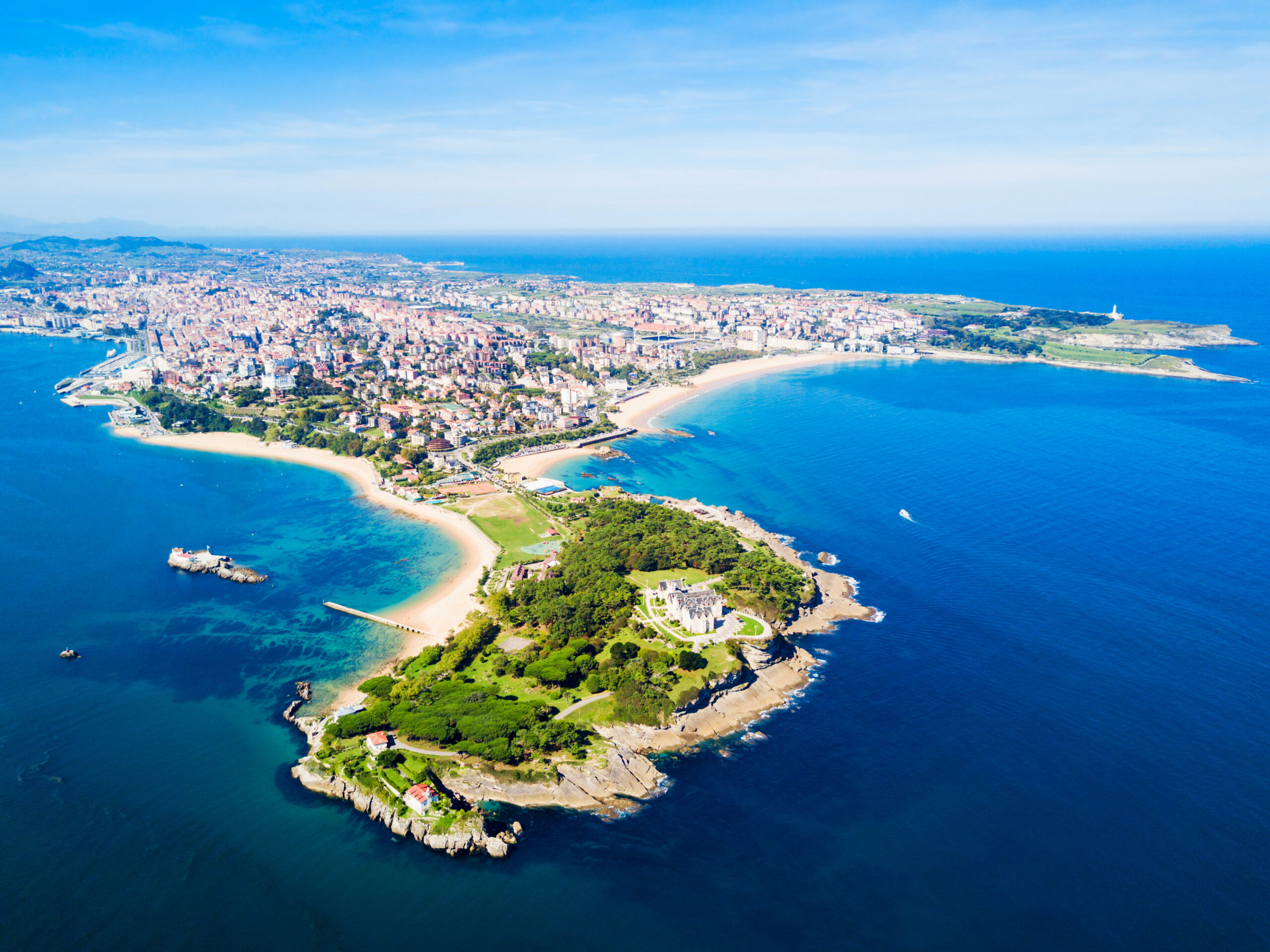The blue of the sea and the green of the mountains are the colors that characterize the landscape of Cantabria in northern Spain. The autonomous community of Cantabria lies between the Basque Country to the east and Asturias to the west on the northern Spanish coast.
One of the main attractions of Cantabria is the Cantabrian coast, the Costa de Cantabria. This section of the Spanish north coast is divided into picturesque bays, cliffs and long estuaries. On the hills along the coast, pastures alternate with forests and fallow land.
On the coast, there are interesting coastal and port towns such as Castro Urdiales, Santander, Comillas and San Vicente de la Barquera. The medieval town of Santillana del Mar, located inland to the west of Santander, is one of the most beautiful villages not only in Cantabria, but also in the whole of Spain.
To the south rise the mountains of the Cantabrian Cordillera, whose highest peaks mark the border with the neighboring region of Castile and Leon in many parts.
Numerous rivers have carved valleys from the heights of the Cantabrian Mountains down to the sea. One example is the picturesque valley that stretches north-south from the Cantabrian coast up into the Cantabrian Mountains, the Valle de Cabuérniga.
Here, in the Saja-Besaya Natural Park, lies the hamlet of Bárcena Mayor, one of the most beautiful villages in Cantabria.
Dunes of Liencres and Costa Quebrada Natural Park

This park includes one of the most important dune areas on the Cantabrian coast, as well as the surrounding coastline, part of the Costa Quebrada Geopark, the nearby islets, the mouth of the River Pas and a large part of La Picota or Mount Tolío. This makes it a unique environment with great scenic, geological and botanical value, as well as an important fauna.
The dunes, which originally made up almost all of this extensive park, are located on the left bank of the Pas estuary, on a peninsula bordered by the mouth of the Mogro River and several adjacent beaches. The sand hills were created by reforestation with maritime pines (Pinus pinaster) in the middle of the 20th century.
Numerous species of waterfowl inhabit the dunes and estuary, including the little ringed plover, dunlin, gray plover, whimbrel and other migratory birds that rest here. There are also numerous lizards, snakes and amphibians, such as the midwife toad and the three species of newt found in the region.
The world-renowned Geopark is a stretch of coastline that not only boasts breathtaking scenery, but is also an authentic open-air laboratory: here you can experience geology in action. It is also a habitat for valuable seabird colonies.
Comillas

This charming little town is one of the resorts on the Cantabrian coast that can hardly cope with the rush of holidaymakers in August. But outside the high season, Comillas offers a varied little old town, numerous examples of modernism and a beautiful beach right next to the town. And there are even more beautiful beaches in the surrounding area.
Before the advent of tourism, Comillas was actually always a fishing village, even one of the most famous whaling towns on the Cantabrian Sea. Watches were kept at the lookout points and boats were launched if a whale was spotted. But this was all a long time ago, whaling ceased in 1720.
The town continued to live from fishing and agriculture for centuries until the end of the 19th century, when things began to change.
The Marqués of Comillas Antonio López y López, who had made a lot of money overseas, invited the Spanish King Alfonso XII to spend his summer vacation in his native town.This was the starting signal for the pioneers of modern beach vacations to travel to the sea in summer. The high nobility and wealthy bourgeoisie from Madrid and the other major Spanish cities could afford this.
The aforementioned Marqués de Comillas also maintained excellent connections to Barcelona, which allowed him to hire well-known Catalan modernist architects.These included names such as the then still young Antoni Gaudí and Lluís Domènech i Montaner. This resulted in the unique, perhaps sometimes somewhat bizarre mixture of different and sometimes contrasting architectural styles that make Comillas unique.
While old stone houses with wooden balconies stand along the alleyways in the old town, the huge neoclassical building of the former Pontifical University, which served as a Jesuit seminary, stands proudly on the hill above the city. The neo-Gothic palace of the Marqués de Comillas is imposing and not at all modest, and right next to it is his private chapel, built like a small cathedral.
El Soplao Cave
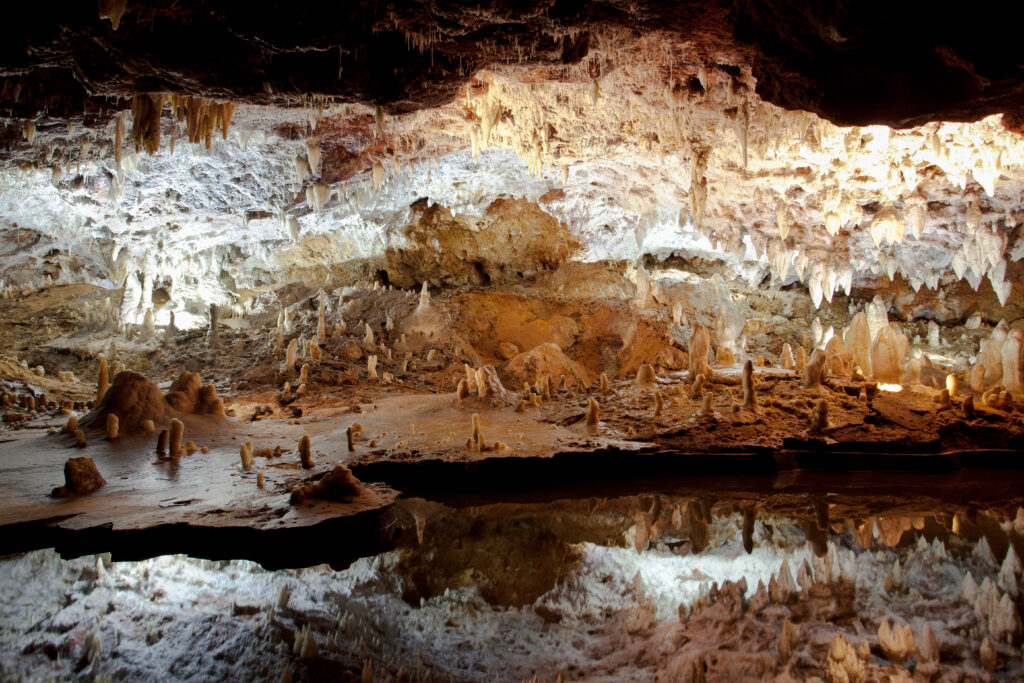
El Soplao is located in the western part of Cantabria in the district of Saja-Nansa. Currently, around 20 kilometers of natural cave passages have been documented, in addition to almost 30 kilometers of mining tunnels.
The cave was discovered at the beginning of the 20th century during mining work in the La Florida mine and is an important reference for cave tourism with its many spectacular, eccentric shapes. The term “Soplao” alludes to the fresh breeze that can be felt where a mine tunnel meets a natural cave passage.
This explains the name of this spectacular cave. A replica mine railroad leads from a platform above ground to the inside of the cave, from where the visit continues on foot. The most important galleries are La Gorda (The Fat One), Los Fantasmas (The Ghosts) and La Ópera (The Opera).
This one-hour guided tour is suitable for everyone. There is also an adventure tour for the more courageous. The two-and-a-half-hour tour of the cave offers the opportunity to become a speleologist and get to know galleries such as El Campamento (The Camp), El Órgano (The Organ) and El Bosque (The Forest).
The provider provides the necessary equipment (helmet with light, overalls and rubber boots). The activity is suitable for ages 12 and up.
Laredo
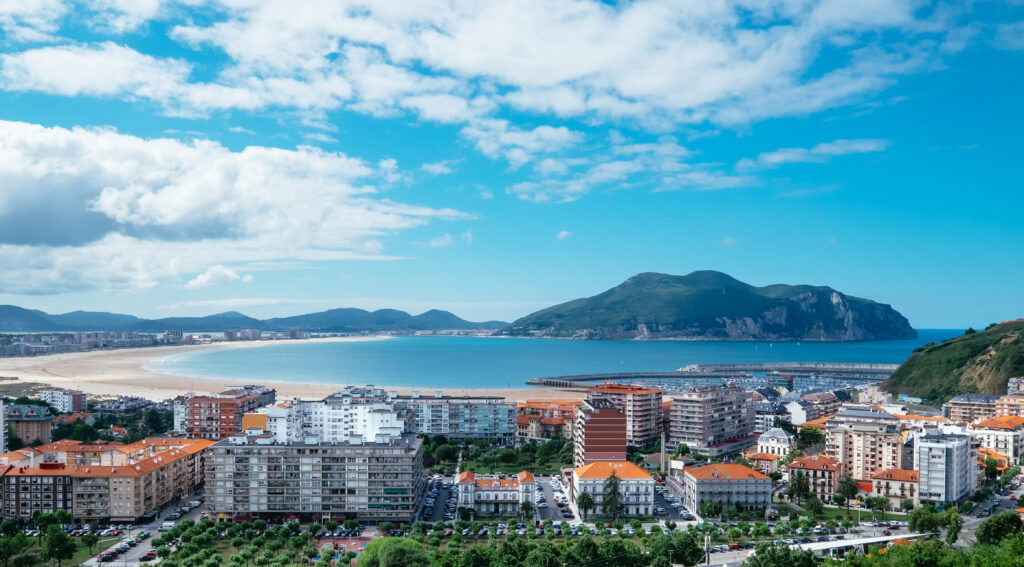
Nestled between the Ria de Treto and the Bay of Santoña, Laredo is one of the most important tourist resorts on the Cantabrian coast.
Its beach is one of the longest and most beautiful in the region: La Salvé is a huge strip of sand five kilometers long, and the village comprises three different areas: Puebla Vieja and its suburbs, the Ensanche area and the extension of the latter to El Puntal.
The old town center of Puebla Vieja was declared a Historic-Artistic Site in 1970. It dates back to the Middle Ages and still preserves the remains of its old city walls.
The maze of narrow streets is home to remarkable mansions dating from the 16th to 18th centuries, including those of the Mar family, the Marquess of Arcentales, the Lord of the Crown, the Hoz family and the Gutiérrez Rada family.
The Gothic parish church of Santa María de la Asunción, with its magnificent Flemish altarpiece, is enthroned high above. The second area, the Ensanche, which stretches as far as the Plaza de Carlos V, is today the center of commerce, administration and services. Finally, three long parallel avenues run between the Plaza de Carlos V and the Puntal, flanked by the city’s two beaches.
One of the highlights of Laredo’s festivities is the Batalla Floral, a battle of flowers that takes place on the last Friday in August and is a true spectacle of light and color.
Torrelavega
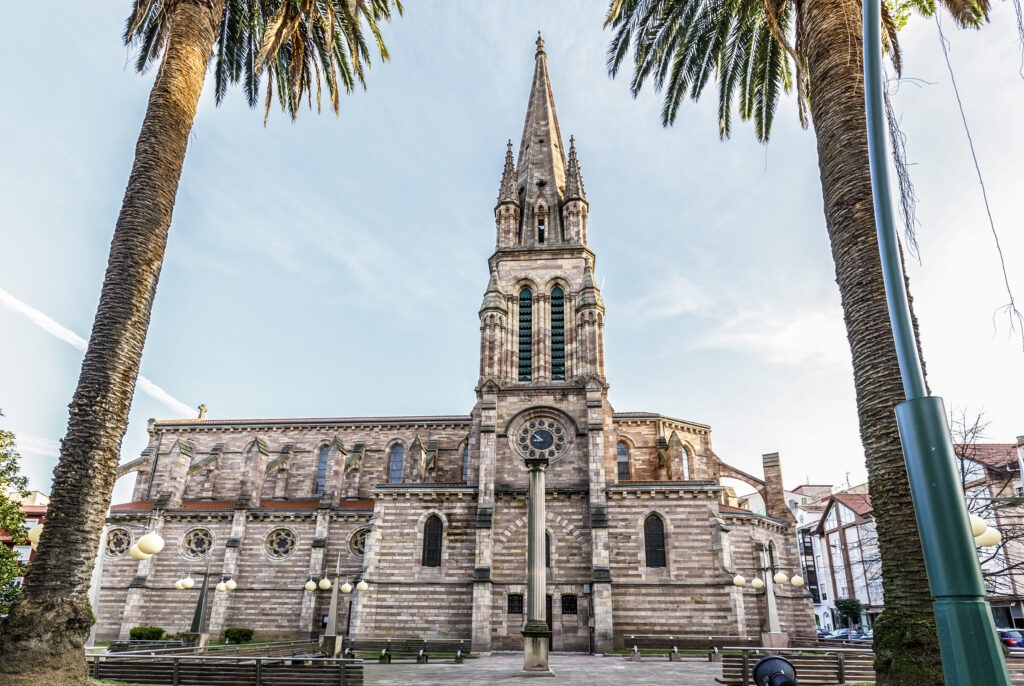
The second largest city in Cantabria. Torrelavega is 25 kilometers from Santander. The town is characterized by its natural surroundings and is located just ten minutes from the coast of Suances and close to other beautiful villages such as Santillana del Mar and Comillas.
Torrelavega’s historical and artistic attractions include the monumental complex of Viérnoles, with its palaces and manor houses dating from the 17th to 19th centuries. In mid-August, the town celebrates its Fiestas de la Virgen Grande with a unique flower gala and a float parade.
The flower gala has been declared a festival of regional tourist interest and, as far as gastronomy is concerned, puff pastry is the city’s most important product. It has its own brotherhood with numerous establishments dedicated to it.
The variety of typical puff pastry products that can be tasted there is almost inexhaustible: polkas, palmeritas, tarts and much more.
Fuente Dé Cable Car
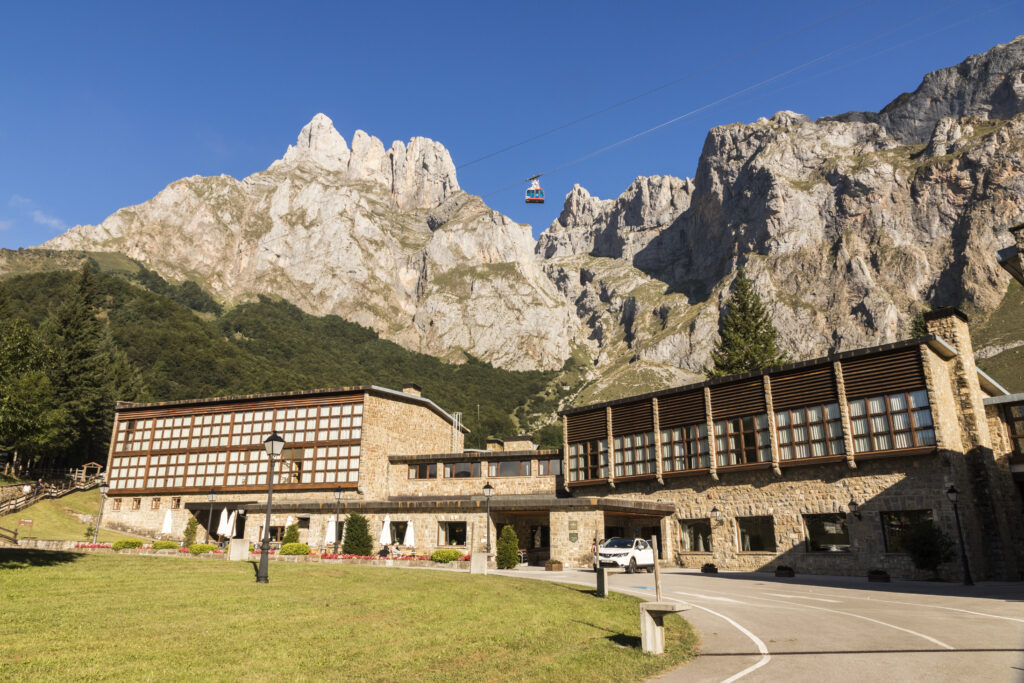
The cable car from Fuente Dé in Cantabria offers a comfortable ride up into the mountains of the central Picos de Europa. Hiking trails of varying degrees of difficulty start from the El Cable mountain station.
Low-hanging clouds often restrict the view of the peaks of the Picos from the valley. Nevertheless, after taking the cable car up to the El Cable mountain station in just under four minutes, it is not impossible to break through the clouds and reach the top under a bright blue sky.
Above the clouds in the valley rise the peaks of the central massif of the Picos de Europa with the Peña Vieja mountain range, which reach an altitude of over 2,600 meters.
The El Cable mountain station is 1,823 meters above sea level. Two well-marked hiking trails start from here.
The challenging Ruta Horcados Rojos leads in a north-westerly direction with views of the Peña Vieja to the Horcados Rojo viewpoint in the middle of the central Picos.The route is approximately 11.5 kilometers round trip with a difference in altitude of 770 meters.
The ascent to the summit is reserved for experienced mountain hikers. Good hiking boots and a sufficient supply of water are a prerequisite for the tour, as there is no shade.
The hike from the El Cable mountain station down to the valley station in Fuente Dé is easier. The 14.5 kilometer long, descending hiking trail Ruta Puertos de Áliva leads through the extensive plateau, the Puertos de Áliva, which separates the central from the western Picos de Europa.
Liérganes
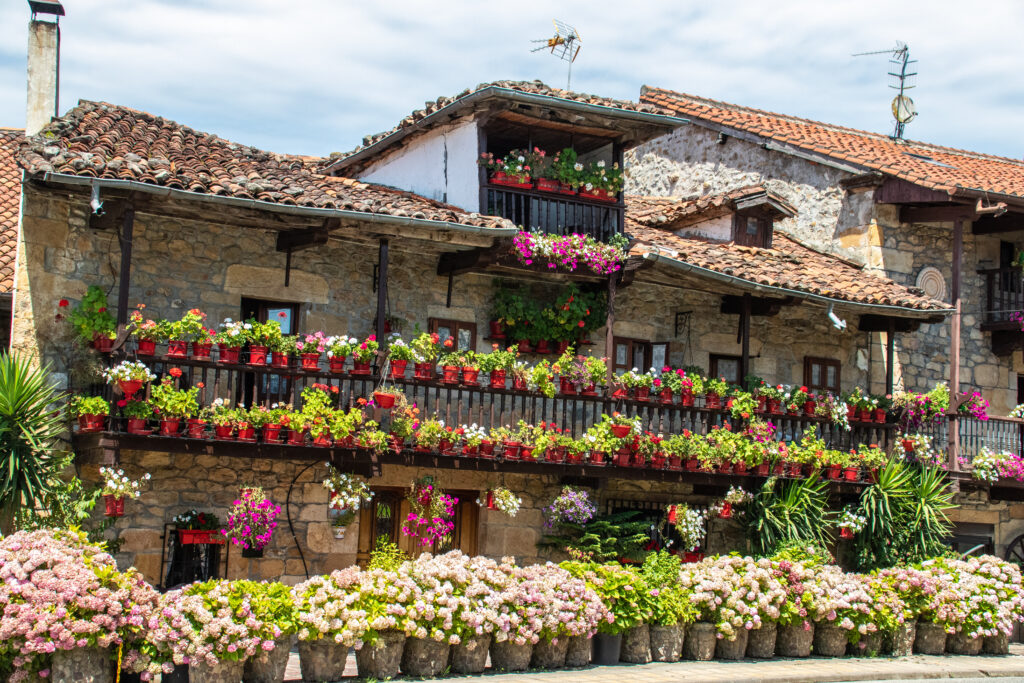
The town center of this Cantabrian town was declared a National Historic-Artistic Monument in 1978 and is home to valuable neoclassical buildings from the 17th and 18th centuries
Liérganes lies at the foot of two small hills, Marimón and Cotillamón, which are popularly known as “las tetas de Liérganes”. In the old town, known as El Mercadil, the Rañada or Cuesta Mercadillo palace, the church of San Sebastián, the parish church of San Pedro Ad Víncula, the houses of the Setién and Cañones families, the chapels of El Humilladero and El Carmen and the new bridge stand out alongside the famous manor houses.
The Liérganes spa, surrounded by a magnificent estate with large trees, also stands out for its characteristic nineteenth-century flair.
Carmona

If you want to discover the rural, original Cantabria, you should head for the mountains. Between the valleys of the Nansa and Saja rivers lies one of the most beautiful villages in Cantabria, the village of Carmona.
Carmona lies on the River Quivierda, surrounded by mountains with green pastures and forests. Far away from the big cities, the peace and tranquillity of rural life prevails here. Red tiles cover the low-pitched roofs of the houses, built from local stone. These are closely packed into the cobbled alleyways. Coats of arms adorn manor houses such as the Palacio Rubín de Celis.
Cows of the native Tudanca breed graze on the slopes of the surrounding mountains. Other sources of income are the forests and agriculture, which on the terraces and walled gardens yield little more than self-sufficiency.
It is nice to cross one of the two bridges over the Río Quivierda and follow the slightly ascending alleys up to the village center with the church of San Roque.
It’s wonderful to simply drift through the alleyways. We peek into secluded nooks and crannies, and in one square there is a decorated tool shed. Carving was an important source of income alongside traditional livestock farming.
Cabárceno Natural Park

This wildlife park is a man-made landscape created to restore a 750-hectare karst area shaped by open-cast mining. Numerous endangered species such as the African elephant, the Grevy’s zebra and the white rhinoceros breed here.
The landscape park, which was created with educational, cultural, scientific and recreational aspects in mind, is now an important tourist asset in Cantabria. More than one hundred animal species from five different continents also live here.
As they live in large enclosures with the most natural surroundings possible, visitors are given the impression of semi-freedom and the circular route, which is designed to enable visitors to get to know all the animals, runs along 20 kilometers of paved roads that can be covered on foot or by car. This takes you to beautiful gorges, peaceful lakes and the park’s extensive enclosures.
There is also an environmental auditorium and a reptile house where you can see numerous snakes and slithers, as well as several parking lots, leisure areas, picnic areas, viewpoints, botanical routes, restaurants, a children’s playground and much more.
Potes
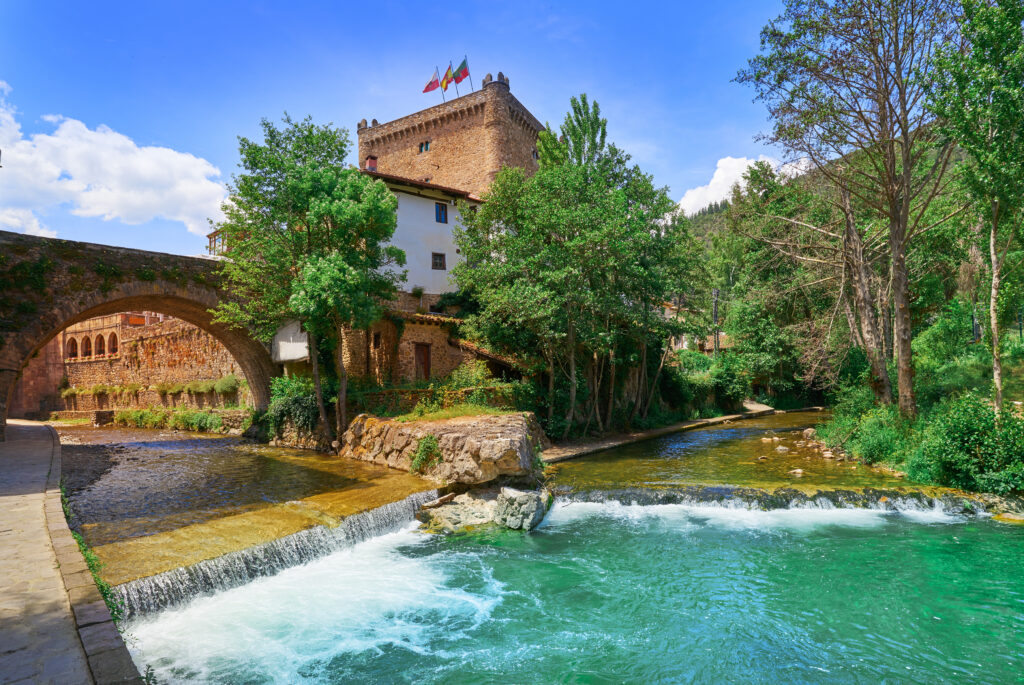
Potes is one of the most charming villages in Cantabria in the north of Spain. It is located in the center of the historic Liébana region, an area surrounded by impressive mountains where rivers and streams converge. The old town is a protected monument.
The streets, spanned by numerous bridges, are lined with buildings and monuments with centuries of history. Potes was the domain of the Infante Tello, son of King Alfonso XI of Castile, and from 1445 belonged to the Marquis of Santillana and his descendants, the Dukes of Infantado.
The so-called Infantado Tower, a solid building from the 15th century, is one of the town’s main attractions today. Other interesting buildings and places in the former capital of the historic Liébana region include manor houses and ancestral homes such as the baroque tower house of Orejón de la Lama, the parish church of San Vicente, whose architectural elements date from the 14th to 18th centuries, and the old bridges of San Cayetano and La Cárcel, which span the course of the River Quiviesa.
Thanks to its beautiful natural surroundings, Potes is an ideal destination for sporting activities at any time of year. The list is extensive: hiking, mountain biking, climbing, ski touring, paragliding, fishing and much more… Don’t leave the town without trying its gastronomy, with dishes such as Lebaniego stew and game dishes. The famous homemade Orujo liqueur deserves a special mention.
Santo Toribio Monastery
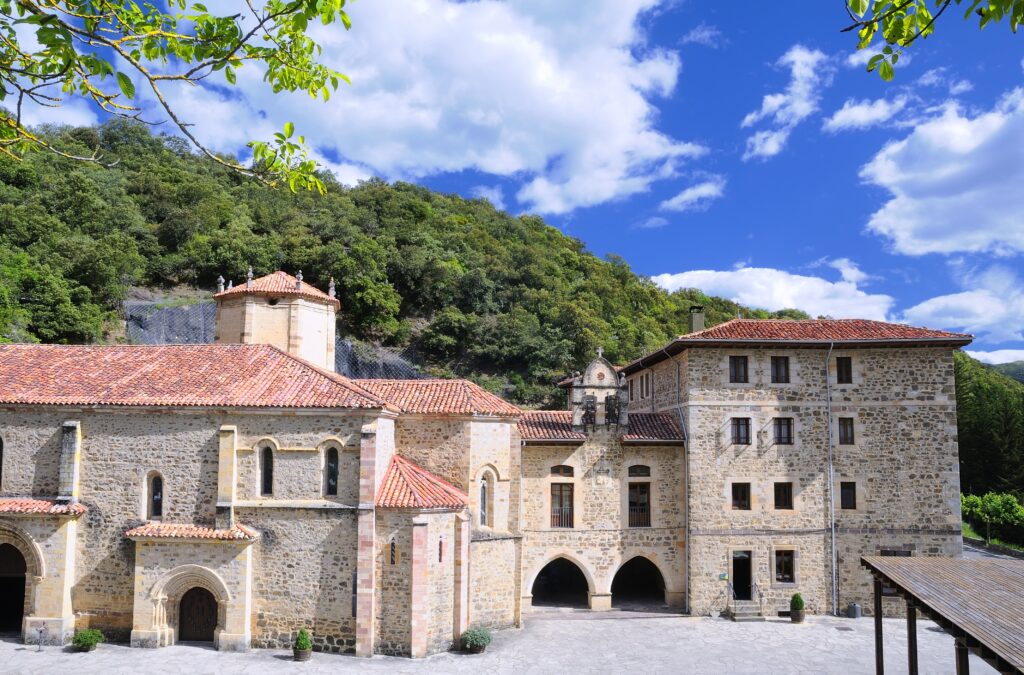
Santo Toribio de Liébana is a Franciscan monastery that belongs to the municipality of Camaleño, near Potes. The monastery houses some of Beato de Liébana’s works, such as the Lignum Crucis, the largest known piece of the True Cross. On September 23, 1512, Pope Julius II granted the privilege of celebrating the Jubilee Year of Libaniego through an apostolic bull, making the monastery an important pilgrimage center.
Alongside Rome, Santiago de Compostela, Caravaca de la Cruz and Assisi, Santo Toribio de Liébana is one of the most important holy sites of Roman Catholicism in Europe.
The monastery is located two miles south of Potes in an area called Liébana at the foothills of the Picos de Europa, which are actually a continuation of the Pyrenees. Benedictine monks founded the monastery here in the sixth century.
Beato, one of the monks in the middle of the eighth century, wrote a commentary on the Book of the Apocalypse with illustrations, copies of which can be seen on the walls of the monastery.
The most important building is the Gothic church, whose construction began in 1256, but which has been rebuilt several times since then. It was built on the site of a pre-Romanesque and a Romanesque building. It has the clarity of lines and space characteristic of the architecture of San Bernardo.
San Vicente de la Barquera
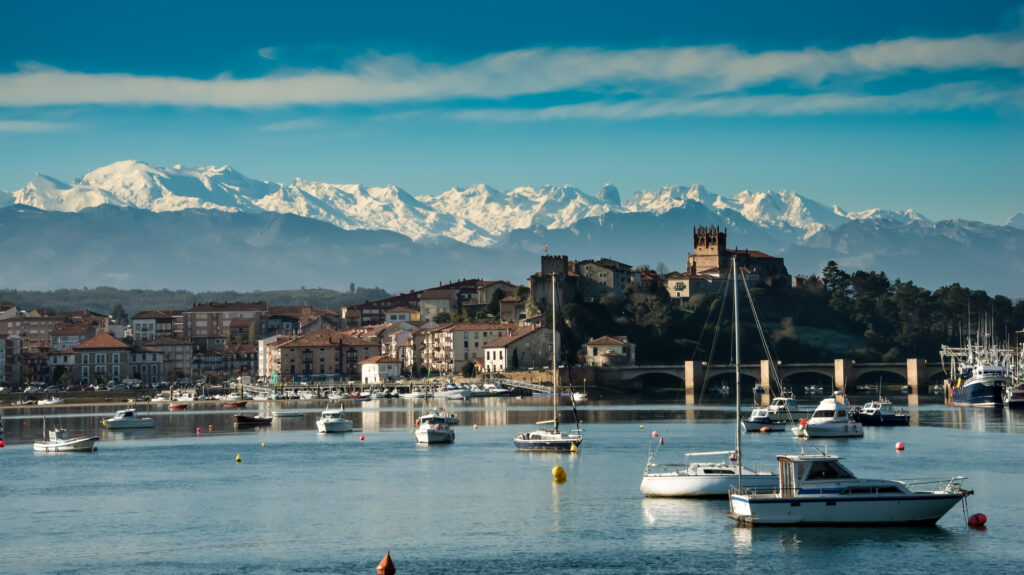
San Vicente de la Barquera is an old fishing village and one of the most picturesque towns on the Cantabrian coast with its beaches, old town and the snow-capped Picos de Europa mountains as an extraordinary backdrop.
Due to its interesting architectural ensemble, the old town center of San Vicente was declared a Cultural Asset of Cantabria in 1987. Particularly noteworthy are the church of Santa María de los Ángeles, built between the 13th and 16th centuries, the castle and the remains of the town wall.
The bridges are another hallmark of this municipality, such as the Maza Bridge with its 28 arches, which was built in the 16th century by order of the Catholic Monarchs, or the Parral Bridge, which dates back to the 18th century. There are also the magnificent beaches of Fuentes, Primera de San Vicente, El Rosal, El Tostadero, Merón and Gerra, as well as a beautiful estuary full of colorful boats.
The sea also influences the cuisine of San Vicente de la Barquera, which uses fish and seafood of excellent quality. The tuna and potato stew sorropotún, also known as marmita barquereña, is very typical.
Santoña

The history of Santoña has always been closely intertwined with the sea. Its port was the first in Cantabria where fish was canned. The local industry is mainly based on tuna and the famous anchovies in olive oil.
Santoña can be divided into two areas: the town center, located on a plain, and the mountainous area of Brusco and Buciero. The history of the town is linked to the monastery of Santa María del Puerto, which later gave rise to the Romanesque church of Santa María del Puerto.
It was built between the 13th and 17th centuries and houses the San Bartolomé reredos with Flemish paintings from the 15th century. Equally important are the military fortifications around Mount Buciero, which attest to the strategic importance of the port. The fortresses of San Martín, San Carlos and Mazo, also known as Napoleon’s Fortress, are fairly well preserved.
Castro Urdiales
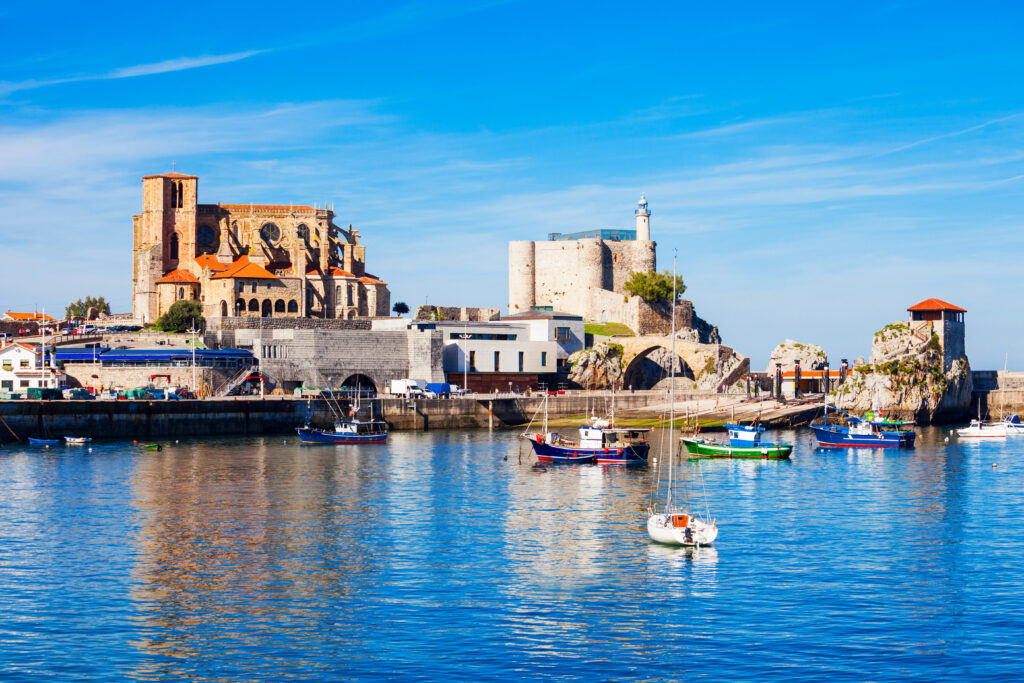
Castro Urdiales has the charm of a fishing village with a famous tradition and tourist flair, which is enhanced by the beauty of the beaches of Urdiales, El Fraile and Brazomar. The Romans settled here and called it Flavióbriga.
The town center, with its characteristic houses with wooden balconies, is of medieval origin and was declared a Historic Ensemble in 1978. The most important buildings from different styles and eras contrast with the simplicity of the fishermen’s quarter, whose narrow streets invite you to take a stroll.
The most famous sight of Castro Urdiales is the castle with the lighthouse and the church of Santa María. The latter dates from the 13th-15th centuries and is the most important Gothic building in Cantabria, and the town also has some very valuable cave paintings.
In the Peña del Cuco cave, drawings from the late Palaeolithic period depicting deer, horses and goats have been preserved. Equally noteworthy is the archaeological site of the Roman Flavióbriga. Remains can be found at a depth of around two meters in the subsoil of the entire present-day village.
Santillana del Mar
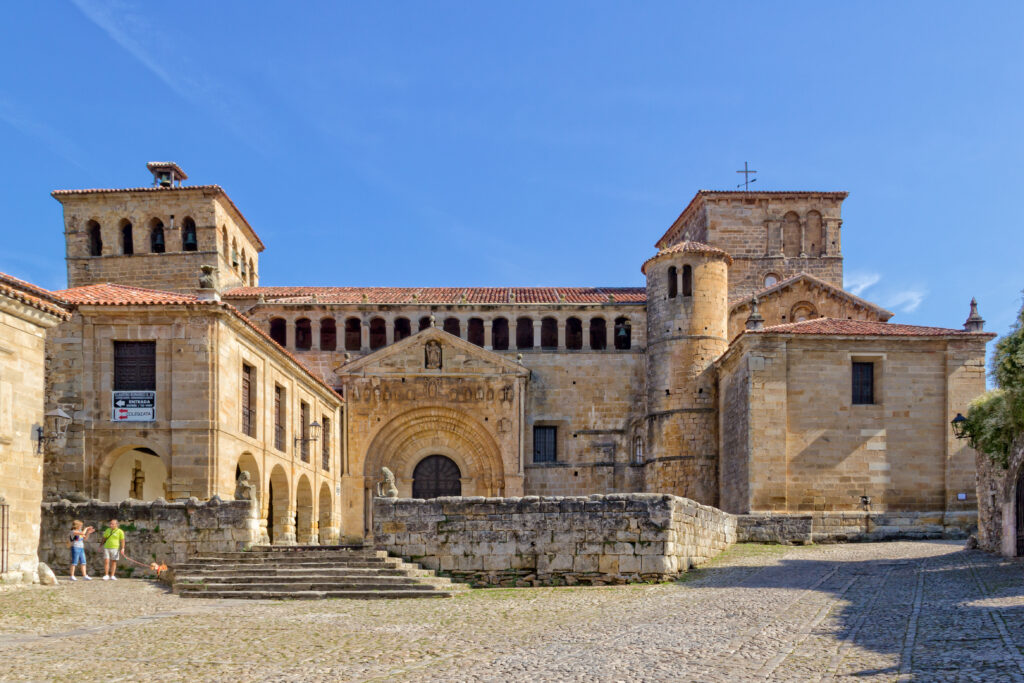
Santillana del Mar, a beautiful medieval town nestled around the collegiate church of Santa Juliana, is located on the route of the Way of St. James in the North. Several fortified towers and Renaissance palaces make Santillana one of the most important historical towns in Cantabria.
However, the greatest jewel of this town in Cantabria lies outside the city: the Altamira Cave is considered the “Sistine Chapel of the Stone Age” and a World Heritage Site.
The local gastronomy and the incredible natural spaces in the surrounding area are other attractions that this town has to offer. The Jacobean route, in its northern variant, traditionally passes through one of the best-preserved medieval enclaves in Cantabria: Santillana del Mar.
The origins of the town can be traced back to the 8th century, when the medieval market town settled around the collegiate church of Santa Juliana. The town owes its current name to this building: Santillana del Mar. The collegiate church, which is considered one of the best examples of Romanesque architecture in Cantabria, continues to serve as the town’s listed center.
Calle de Santo Domingo, the main street of Santillana, leads to a historic quarter that has managed to survive the passing of the centuries while maintaining an excellent state of conservation. The picturesque cobbled streets are flanked by manor houses, most of which date from the 14th to 18th centuries.
Bárcena Mayor
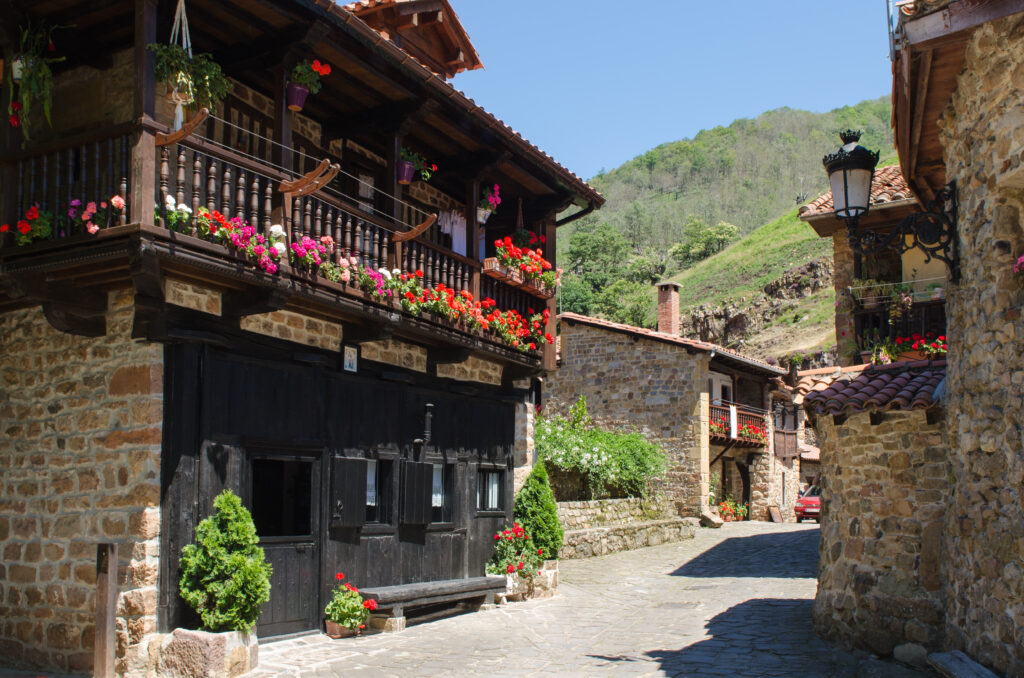
It’s fun to stroll through the village. The mostly two-storey houses are covered with red tiles, the wooden ceilings protect the balconies made of dark wood. The second floor below the balconies is set back. This created a protected vestibule to dry the corn, for example, which has been grown here since the 17th century.
Red geraniums in colorful flower pots add a splash of color. Heavy wooden doors and bars in front of the windows protect the lower floor.
At the southern end is perhaps the most beautiful quarter, the Barrio El Puente. An old stone bridge leads in two arches over the rocky riverbed of the Río Argonza, which flows into the Río Saja at Correpoco.
Bárcena Mayor is one of the most beautiful villages in Cantabria. This judgment holds true, perhaps precisely because the traditional character can still be felt among the souvenir stores, well-restored houses that have fallen into disrepair. Just under 100 people live here.
Mostly from the tourists, who outnumber the locals during the day. Chairs stand in front of the house entrances. In the evening, when the visitors have left the village, they will stop here for a cozy chat.
The restaurants are lined up along the river. The village specialty is cocido montañés, a hearty stew with white beans, cabbage leaves and sausages.
Reinosa
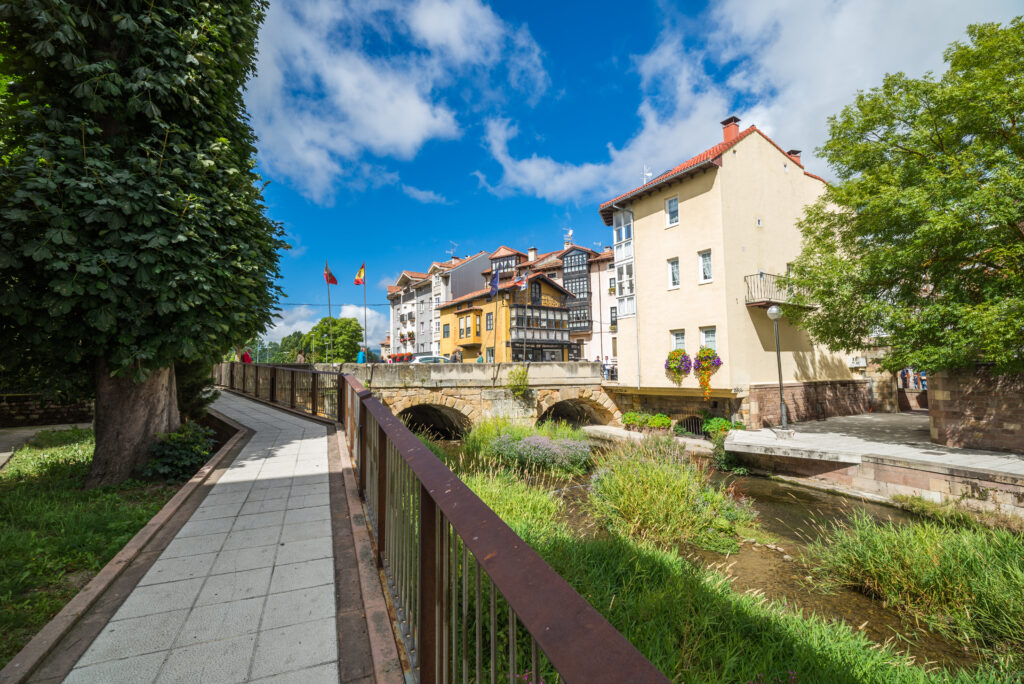
This town in Cantabria is particularly beautifully situated in the middle of high mountains.
Reinosa is located 75 kilometers from the city of Santander in the Campoo area. The history of the village dates back to the Middle Ages. The old town center preserves some interesting sights such as the baroque church of San Sebastián, the ashlar buildings in the Plaza del Ayuntamiento from the 16th and 17th centuries and the manor house La Casona from 1830.
In the town’s restaurants you have the opportunity to sample typical Cantabrian dishes with trout, wild boar and deer as well as the hearty stew “cocido montañés”. Don’t leave the town without trying its typical sweet, the “pantortilla”.
In the area around Reinosa, sports enthusiasts can not only ski in the Alto Campoo ski area, but also enjoy water sports at the Ebro reservoir. A nice excursion is the ascent to the Pico Tres Mares, from whose summit, over 2000 meters high, you can enjoy a magnificent view.
Noja
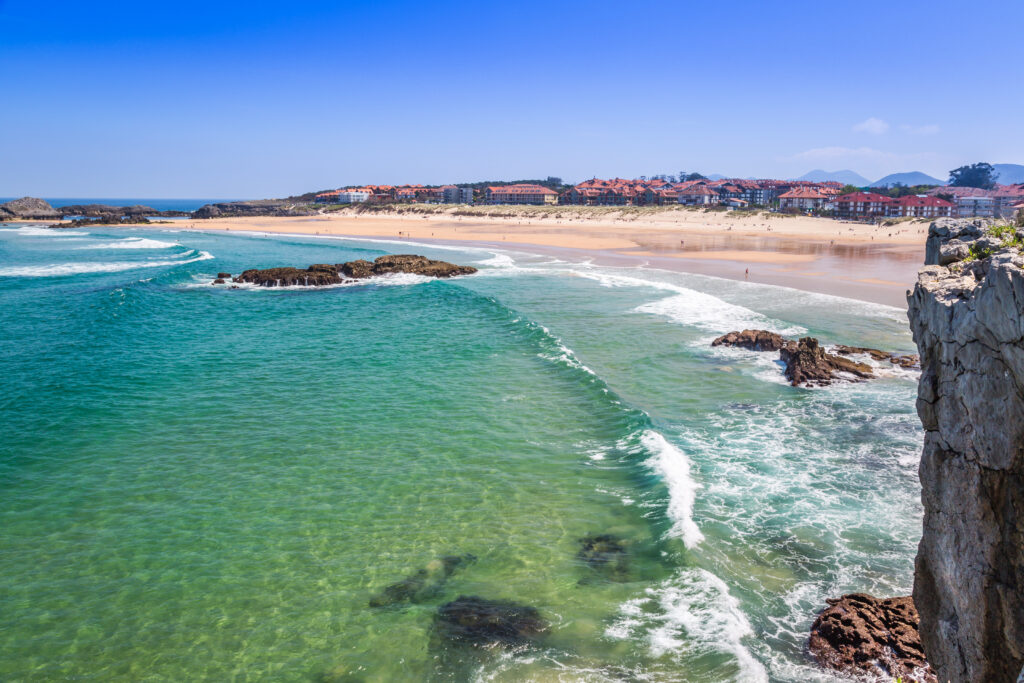
A vacation resort on the Cantabrian Sea, known for its beaches and natural marshland, which is a wonderful place for birdwatching.
The region’s miles of golden sandy beaches, such as Trengandín and Ris, are Noja’s main attraction. Two good tips: Enjoy the spectacular sunsets and visit the beaches at low tide to experience the moon-like landscape. If you like diving, we recommend Trengandín beach. Ris beach, on the other hand, is better suited to surfing or canoeing.
The natural environment is protected and its numerous marshes attract countless birds every year. The village has many old villas and traditional stone houses, a medieval bridge, chapels, fountains and sand mills.
Take advantage of your visit to try one of the most popular products: velvet crab (a type of crustacean) and grilled anchovies or sardines. Don’t forget that there are many local festivals in the summer (for example Festival of San Pedro, June 29, Festival of Nuestra Señora del Carmen, July 16 or the Festival of the Holy Martyrs in the last week of August).
Valles Pasiegos

In addition to the lush nature, visitors will find a characteristic landscape shaped by five centuries of agriculture as well as a rich cultural and ethnographic heritage.
The valley is characterized by its harmonious fusion of the natural landscape and the influence of man. Inhabited since the Palaeolithic period, the area has a very rural character and offers a suitable environment for the training of traditional trades such as blacksmiths, carpenters and cattle breeders.
Places rich in cultural heritage such as Vega de Pas, San Pedro del Romeral, Puente Viesgo and its cave El Castillo, Corvera de Toranzo with the manor house of the Díez Villegas family, Acereda with its parish church La Asunción, Alceda with its popular architecture and many more are particularly worth a visit. The museums related to rural life, such as the Folklore Museum of Villas Pasiegas, are also well worth a visit.
The natural environment is characterized by meadows and oak and beech forests. The area is particularly suitable for activities such as hunting, fishing, horse riding and hiking. The spa tradition and gastronomy (with products such as “sobaos” – butter sponge cake – and cheesecake) complete the offer.
Los Collados del Asón Natural Park
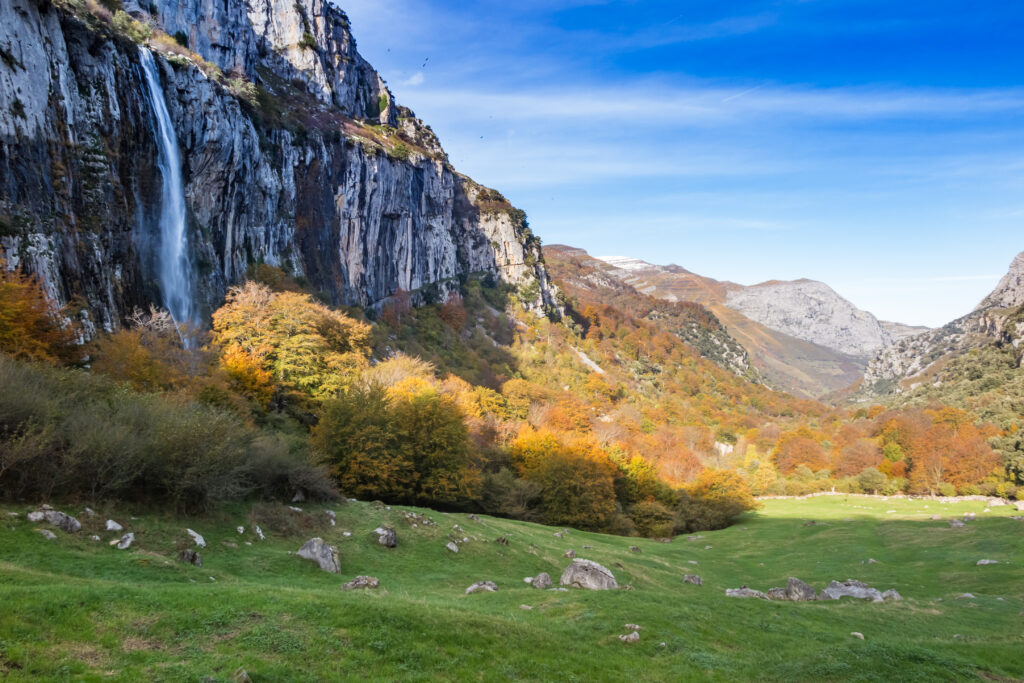
The Collados del Asón Natural Park is a Spanish nature reserve in the Autonomous Community of Cantabria, declared a Natural Park in 1999 and included in the Cantabrian Network of Protected Natural Areas by law in 2006.
It is located in the heart of the Cantabrian Mountains in the south-east of Cantabria and its entire territory of 4740 hectares, of which 4020 hectares belong to the municipality of Soba and 720 hectares are on private land, is situated at an altitude of between 240 and 1632 meters above sea level.
It is a unique area of great interest, characterized by limestone cliffs, small beech forests and unique Cantabrian oak forests, as well as man-made pastures for livestock farming. This diverse habitat allows the development of a varied fauna typical of the Cordillera. The park is located in an area that is traditionally very sparsely populated, which has allowed a high degree of naturalness to be achieved.
The small village of Asón (in the municipality of Soba) is the only population center within the park boundaries.
Suances
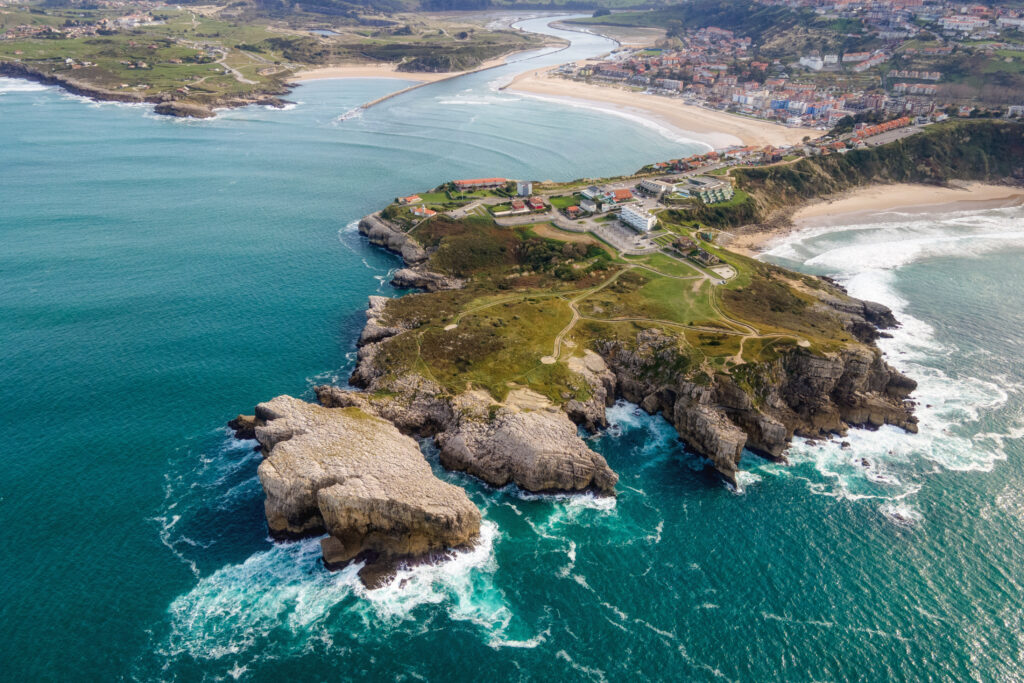
This tourist resort in the Besaya region is located around the confluence of the Saja and Besaya rivers. It has excellent beaches, such as Los Locos, which is perfect for surfing.
The Romans called the place Portus Blendium. Numerous remains from this era have been found next to the church. Although fishing is also practiced, Suances is primarily a tourist resort nowadays. This is thanks to the beaches around the natural harbor Punta del Dichoso, which is surrounded by cliffs.
Particularly noteworthy are the Playa de Tagle beach, which invites you to watch spectacular sunsets on long summer evenings, as well as the beaches of La Tablía, La Ribera, La Riberuca and the one-kilometre-long La Concha beach.
Santander
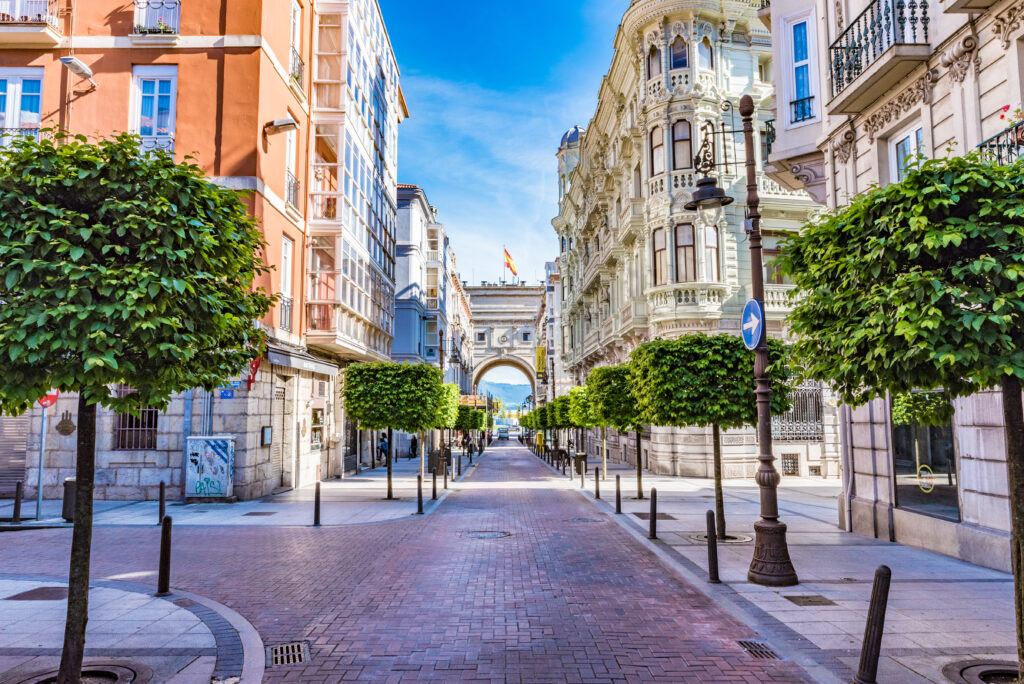
A fairytale city where everything revolves around its bay, which is one of the most beautiful in the world.
The northern Spanish city of Santander (Cantabria) combines green mountain landscapes with white sandy beaches, mansions and villas with avant-garde architecture and the unmistakable traces of the fishing tradition. A city with many facets to discover.
The aristocracy and nobility made Santander their favorite travel destination at the turn of the 19th and 20th centuries. A stroll through the old town with its magnificent buildings takes us back to this time, especially the city’s jewel, the Magdalena Palace.
The building stands on the highest point of the peninsula of the same name and is an absolute must-see when visiting the city, especially as it offers a wonderful view of the “bride of the sea”, as Santander is popularly known, surrounded by beaches and mountains.
Santander combines this magical, elegant atmosphere with its fishing tradition, which can still be seen today, particularly in the city’s fishing district. This is where traditional local cuisine is served, with fresh fish and seafood such as “rabas” (breaded squid strips), “maganos” (squid) with onions or clams served sailor-style.
This facet contrasts with the “new” Santander, which is home to the latest cultural and artistic trends and shows its best side in the modern Centro Botín designed by architect and Pritzker Prize winner Renzo Piano.

